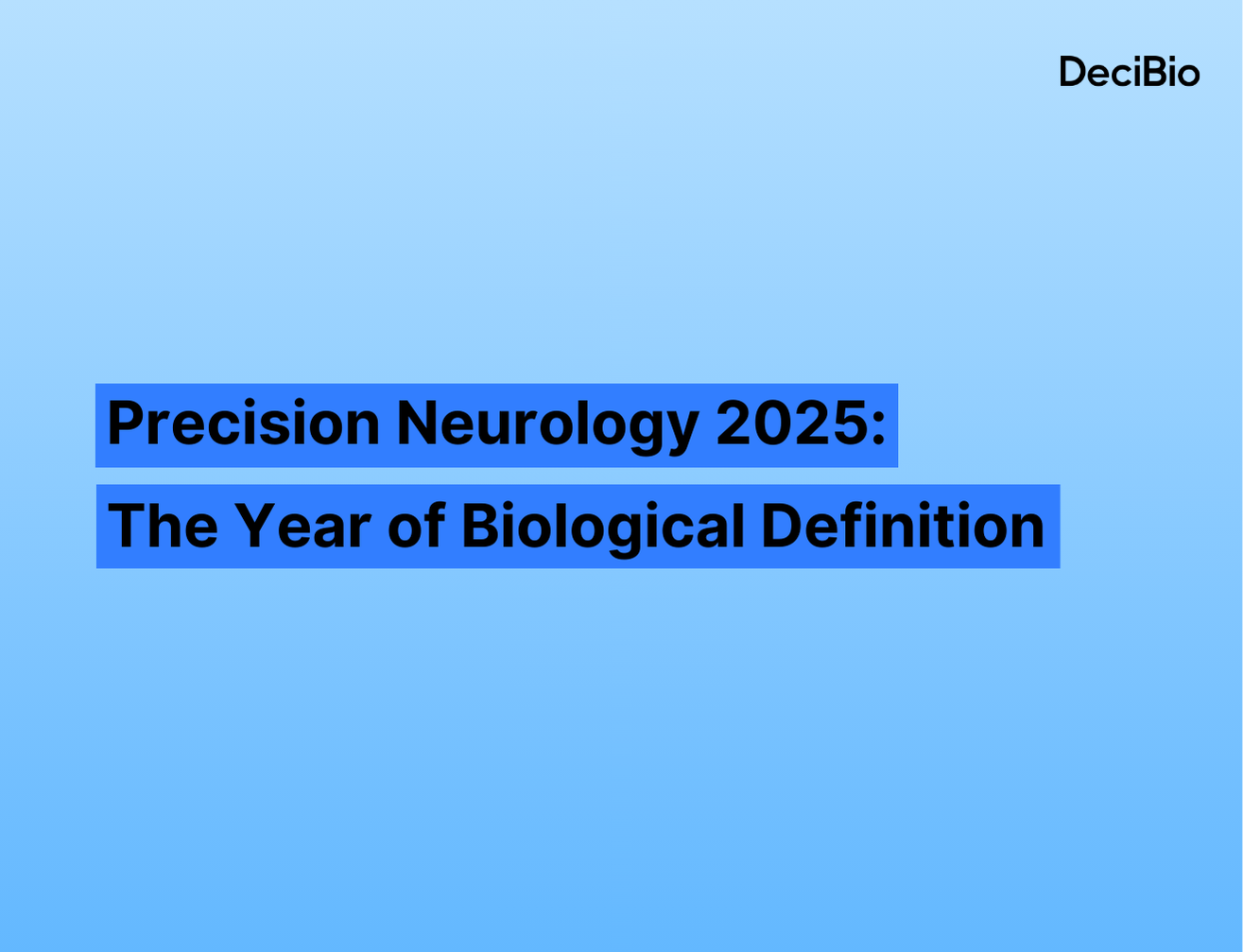Takeaways from HLTH 2019
Last week’s annual HLTH conference brought together 6,000 digital health leaders from every sector of the healthcare industry. Stakeholders from payor organizations, health systems, pharma, diagnostics companies, tech giants, government, and a myriad of startups hashed out key issues burdening the healthcare system. One question was top-of-mind for many speakers at HTLH — Why does the healthcare system lag so far behind other industries in digitization?Stakeholders across sectors emphasized the disparity that exists between the patient experience in healthcare and the consumer experience in other industries, such as retail, tech, and banking. Healthcare primarily lags in providing consumers access, convenience, transparency and control over their information and data in the way other industries do. This disparity is driving evolution of the healthcare system, as each sector faces pressure to innovate to empower the patient. New entrants with this mentality (e.g., tech giants, digital disruptors) are forcing incumbent players (e.g., providers, payors, pharma and diagnostics companies) to take on new roles and establish non-traditional partnerships across the ecosystem. The following case studies were highlighted at HLTH as key examples of how each sector is driving innovation to create health’s future.Health systems are establishing partnerships that leverage technology to alleviate administrative burdens while improving quality of care and patient engagement. Brian Sivak, Managing Director of Kaiser Permanente Ventures, emphasized the importance of strategic objectives over financial ones in partnering with early-stage companies whose technologies can provide a competitive edge to a health system. Voice technology and remote patient monitoring arose as two prioritized technology areas for health systems at HLTH. Atrium Health and Boston Children's Hospital highlighted efforts to incorporate voice technology for inpatient and outpatient care delivery. As part of its strategy to improve access to care, Atrium Health is leveraging an Alexa skill that allows its patients to locate and reserve urgent care visits. Boston Children’s Hospital has deployed voice within its Extended Recovery After Surgery (ERAS) Program, including managing patients after cardiac procedures by pushing voice messages and enabling health tracking through Alexa. BCH also uses Alexa to replace call buttons in inpatient care settings (e.g., call a nurse, change room temperature). In the remote patient monitoring space, Oschner Health System is working to integrate RPM tools for diabetes and hypertension with EMR systems to power real-time insights and decision-making.Few health systems have forged partnerships in telemedicine, despite the promise of teleconsultations to reach patients with limited access to in-person care. While some forward-thinking providers have initiated partnerships (e.g., Partners HealthCare and Teladoc), providers’ resistance to telemedicine has limited current instances of partnerships. Given this resistance, telemedicine players have historically resorted to fragmented “shadow networks” of providers they curate. As health systems realize the necessity of digital transformation, they may begin incentivizing or requiring physician participation in homegrown or partnered telemedicine solutions, such as American Well or Teladoc. Additional forms of partnerships that health systems may consider are with specialty telemedicine players. HLTH highlighted several players that are addressing gaps in care for highly stigmatized areas like sexual and reproductive health (e.g., Maven Clinic, Nurx, Pill Club, and Ro). Zachariah Reitano, CEO of Ro, attributes Ro’s success in the direct-to-consumer (DTC) market to increased internet access, expiring patents, and patient desensitization to out-of-pocket costs due rising deductibles. Vasha Rao, CEO of Nurx, astutely noted that while less than 50% of Americans ages 19-29 have a primary care physician, almost all of them have a smartphone. Health systems could consider partnerships with specialty telemedicine players to access more patients in this demographic.Payors are spinning out strategic innovation arms to attract assets useful for payors’ predictive modeling and coverage analytics or to differentiate from other plans through improved quality of services or cost controlling (e.g., chronic disease management platforms). Key examples of innovation arms include BlueCross BlueShield Venture Partners, Optum Ventures, and Cigna Ventures. Payors, along with health systems, are investing in at-home care providers. Home healthcare came to the forefront of value-based care conversations at HLTH, given the opportunity to reduce costs and improve patient outcomes. “Pay-viders” are on the rise, particularly as payors scoop up at-home care services (e.g., Humana’s recent acquisitions of hospice provider Curo and primary care provider Kindred at Home). As “pay-viders” and payor telemedicine services emerge, vertical integration is evolving beyond the pharmacy segment (e.g., CVS-Aetna, Cigna-Express Scripts) into the provider realm.Pharma is undergoing organization-level digital transformation. Most large pharma companies have appointed Chief Digital Officers (CDOs), many of whom come from the retail and tech industries, such as Bertrand Bodson (Novartis/Amazon) and Karenann Terral (GSK/Walmart). Real-world evidence is often part of the digital strategy highlighted by pharma leadership. Pfizer’s Head of RWD, Christopher Boone, emphasized their goal of building a “RWD-mart” to aggregate and structure data from external sources. He noted that this data-mart is aimed at addressing pharma’s inherent inability to generate outcomes data outside of clinical trials.Real-world evidence, genomics and digital therapeutics arose as key areas where pharma is inking strategic partnerships. Pfizer pointed to its partnership with Aetion, a leading RWE analytics provider, as key to its label expansion for lbrance, a female breast cancer drug approved for male patients through RWD. Real-world genomics data generated by DTC testing services also came to light as an increasingly common partnership archetype aimed toward advancing precision medicine. 23andMe pioneered this path through its partnership with GSK last year, which caused controversy that led Ancestry to swear off pharma engagement upon launching its genomics product. Celmatix, a DTC fertility genomics company, highlighted its partnership with Evotec aimed at developing treatments for reproductive conditions like PCOS and endometriosis. Pharma companies are also establishing partnerships in the digital therapeutics (DTx) space, typically with companies targeting therapeutic areas poorly addressed by traditional therapeutics alone, like mental health and chronic disease. DTx players appear to bifurcate in their appetite for pharma partnerships to navigate market and channel access. Although the Novartis-Pear Therapeutics partnership, a poster child for pharma-DTx collaboration, was recently dissolved, other DTx players are similarly looking to pharma to overcome clinical validation, regulatory approval, and reimbursement hurdles (see Happify-Sanofi, Proteus-Otsuka, Propeller-GSK, Propeller-Aptar, Tilak-Novartis). Conversely, Akili has emphasized that its strategy omits partnerships with pharma in order to forge a novel therapeutics paradigm.The diagnostics market is currently seeing a rise of DTC companies offering at-home testing. Though not directly competitive to diagnostics incumbents (at-home sample kits are commonly sent to large reference labs using major Dx platforms), DTC offerings emerge as a trend consistent with increasing consumer demand in healthcare. Emerging DTC players are building partnerships with retail pharmacies to scale adoption of their tests, either as off-the-shelf offerings or through wellness clinics. Julia Cheek, CEO of EverlyWell, described their partnerships with Target and Kroger as an approach to “meet people where they are” for the share of the population that is not purchasing health products digitally. Most DTC diagnostics players also leverage social media to attract millennial customers through online and brick-and-mortar retail channels. Despite limited technical differentiation for at-home tests as opposed to traditional tests, speakers highlight their value in improving access to testing and empowering customers to own their data. At-home testing players are empowering patients to learn more about their health and bring information to their doctor. Modern Fertility allows customers to get the at-home testing they would otherwise get from infertility care at a fraction of the price, earlier in their fertility journey. LetsGetChecked and EverlyWell both initiated at-home test offerings for STDs to target undertesting due to stigmatization and have recently broadened their menus to include women’s and men’s health, food sensitivity, and wellness testing. LetsGetChecked partnered with Apple Health earlier this year to integrate genetic risk factor test results with wellness tracking and coaching.Tech giants entering healthcare generated significant buzz at HLTH. Amazon, Apple, Google and Facebook came to the forefront as tech players building offerings and developing partnerships in healthcare. Given their existing usership and entrenchment in our daily lives, these tech giants attract interested partners from across the healthcare ecosystem and are well-positioned to disrupt it. Facebook announced the launch of its Preventative Health Tool, which offers health resources to guide preventative care access and guideline adherence. Shortly after the conference, Google acquired FitBit, heralding its race against Apple to leverage wearables data to power novel digital health solutions. Amazon spoke at-length about its partnerships with 150+ digital health startups using AWS and its API library to push predictive and personalized disease modeling. As these tech giants gobble up smaller players across the ecosystem and complement their unrivaled understanding and data warehouses of consumer behavior with healthcare expertise, the line between consumer and patient will become increasingly blurred.

Chris Lew

Chris Lew is a Senior Associate at DeciBio interested in digital diagnostics and therapeutics and their impact on personalized medicine and population health. Chris has worked on consulting engagements across the diagnostics and health tech spaces. Connect with him on LinkedIn.
Fanny Anderson

Fanny Anderson is an Associate at DeciBio, with experience in competitive assessment and strategy development for disruptive players in oncology diagnostics and digital health. Connect with her on LinkedIn to learn more about her expertise in health technology consulting.

.png)




